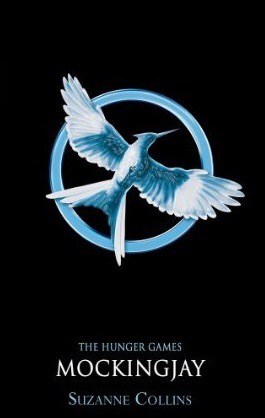I love the Hunger Games series. I think they’re well written books that launch a series of severe, complex critiques of late capitalism and state surveillance, and I think Collins is a bit of genius for being able to maintain a tone and reading level suitable to a young adult audience without dumbing down (or sugar-coating) her message. Suzanne Collins, if you ever happen upon this blog post: you’re gutsy, and you’re one of my heroes.

That said, I’m disappointed in the third book. I don’t mean that you shouldn’t read it– you should, and there are plenty of sources that will tell you the same. Just: be prepared for the third book. It isn’t as well put-together as the others. There are scenes that are highly citational in a straight-forward way (for example, the purple glow that causes anyone who steps within it to bleed from every orifice until they’ve bled out feels like it was pulled directly from the episode “Ariel” in Joss Whedon’s Firefly.), rather than in the layered way you might have come to expect from the earlier books. The concept of the reaping, itself so central to the entire structure of the series, is clearly a reference to Shirley Jackson’s short story, “The Lottery,” but in Collins’ text that structure lays the foundation for something larger. Where “The Lottery” ends with the implied death of the unlucky soul to pull the black dot from the pot, The Hunger Games can be read as a meditation on the kind of culture that supports something like a reaping. My point is that Collins is careful and deliberate with that borrowing, where much of the borrowing that fills out Mockingjay seems a bit more cut-and-paste, and is certainly intended to be cinematic rather than literary. Some sources suggest that Mockingjay will (er, has/will? will/has?) make the best movie. I can’t decide if this is an accident (a happy one for film lovers, a sad one for book lovers, and an utterly confusing one for people who love both), or a very clever and intentional tactic. After all, if the books have taught us anything, knowing what makes good TV is military.
Next, I’m reading: Sarah Winman’s When God was a Rabbit
Have a book rec for me? Leave it in the comments!




